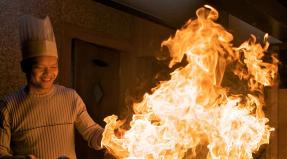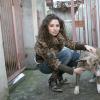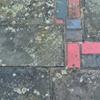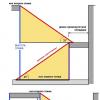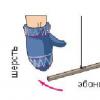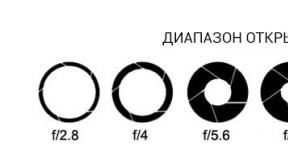Learning photos. Photocourse "the basics of photography or training beginners from scratch"
In each lesson 2 hours of theory and 2 hours of practice
If there is no result, you can take the course again for free
Certificate of completion
Continuous teacher support
Step-by-step homework and error handling
Small groups up to 10 people
Camera settings and creative techniques with shutter speed and aperture
Practice: still life photography
- How the camera is arranged and how the photo turns out.
- How lenses affect the image.
- Semi-automatic and scene modes of the camera and cases when they need to be used.
- Exposure (brightness) control in different lighting conditions.
- How to take photos without digital noise.
- Exposure How to “freeze” motion and how to make blur.
- Aperture and depth of field. How to get a blurred background. How to get sharpness throughout the frame.
- Correct focus: how to get sharp shots and focus on the main subject.
- Studying all the settings of your camera.
- Camera setup algorithm that allows you to get high-quality photos.
- Homework with step by step instructions.
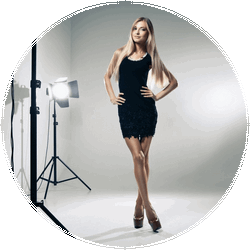
The second day is devoted to practical photography. We are trying to simulate situations from the real life of the photographer - a creative search for angles, work under the pressure of time, working with a model, using polarizing and transition filters, etc. photography is interrupted by lunch, after which we either take a moment or take it back.
Often our meeting does not end with your visit to the course. See you on trips, informal meetings. The first of the two levels of the course contains a total of 15 lessons, during which participants learn the basic photographic concepts, rules and learn the basics of working with photography. Each lesson is divided into three thematic parts. The introductory part of the lesson is devoted to theory, followed by a section devoted directly to the method, and the third part of the lesson consists of a block devoted to photographic creation.
Work with light
Practice: shooting a portrait with artificial light
- Discussion of homework.
- How to make a photo voluminous. Work with shadows and highlights.
- The main characteristics of light and their effect on the final photograph. Soft and hard light, diffusion, color temperature.
- Differences of artificial light and features of working with it.
- Natural light.
- Basic light schemes. Work with one, two and three light sources.
- How to work with a reflector.
- How to create the mood of photography using light.
- We learn to emphasize the advantages and hide the imperfections of the face with the help of light.
- How light affects the colors of the photo.
“Photography is the most democratic of all arts”- said the famous writer and photographer Vasily Peskov. Indeed, today anyone who has a camera or phone with a camera can take pictures. However, not all photos are interesting.
Participants in the course will gradually lead not only to an understanding of the functions of photographic methods, but also to an understanding of the logic of photographic visualization. Gradually, all the main genres from country to action will be held at both levels. A positive approach is to give participants an emphasis on photography, to enjoy photography and to ensure the right confidence in their own work. The head teacher of the courses combines both the practice of a photographer and photographers who do not offer any other courses.
Collective lessons can be combined with an individual approach to managing photographic methods. The vast majority of lessons consists of three main parts: the presentation of voluntary homework given in the previous lesson, “Photographic Technique and Digital Control”, “Creative Theme” with the projection of images on your own inspiration. The creation and evaluation of these tasks contributes to mutual competition and at the same time reduces technical and compositional errors.
“Many photographers believe that if they buy the best camera, they can take better photos. The best camera will not work for you if there is nothing in your head or heart ”, - considered the famous American portrait photographer Arnold Newman.
So what makes a person a photographer, if not a camera? How to distinguish good from bad photos? Many famous photographers agree that for this you need to "grow" a special talent in yourself - the ability to see things from new angles, to notice the little things, the beauty in the ordinary. Of course, it is important to be able to use the camera and know the basic laws of frame construction.
The first level of evening photo schools consists of 15 lessons, which are held for 15 consecutive weeks. Visual dictionaries of photographic technologies and photographic composition and other scripts for the course in electronic form. Possibility of individual consultations with a lecturer outside the standard lesson. The effect of silver. . Part of the course is 10 nights and one weekend workshop. We will discover the secrets of technology, light and composition. There will not be a single portrait or luminography in the studio!
Participants will learn the technical and aesthetic background of photographic art, which they will practice in their own photographic cycle. The course will help participants to develop their creativity, technical knowledge and aesthetic feelings. We will build solid foundations for the three pillars of photographic art. We light the photo.
If you are just starting your way in photography, and you have a lot of questions, you have come to the right place! We will help you learn how to photograph and achieve heights in this art.
Announcements of the nearest courses
Photo courses for beginners
- Continuing education program - Sign up
We reveal the secrets of composition and aesthetics. Of course, let's say how to use the camera simply and efficiently. How to properly measure the scene, how to change the depth of field or how to work with the sensitivity of the chip. In practice and how professional photographers work.
The basics of portraiture - children's photos
How to achieve a shallow depth of field? How do we capture the image of our little children, how they look like a little boy or girl in a picture looks better, as natural as possible, and smiles? What are the most popular poses of contemporary photographers around the world? What is the best light for baby photography?
| Training courses | Ak.ch | Nearest group |
Teachers |
Price from For legal entities (organizations) the minimum price is indicated, valid for full prepayment. "class \u003d" div-pointer "\u003e * |
|||||||
|---|---|---|---|---|---|---|---|---|---|---|---|
| Full time | Online | ||||||||||
| Private faces |
Organizational nations |
Private faces |
Organizational nations |
||||||||
